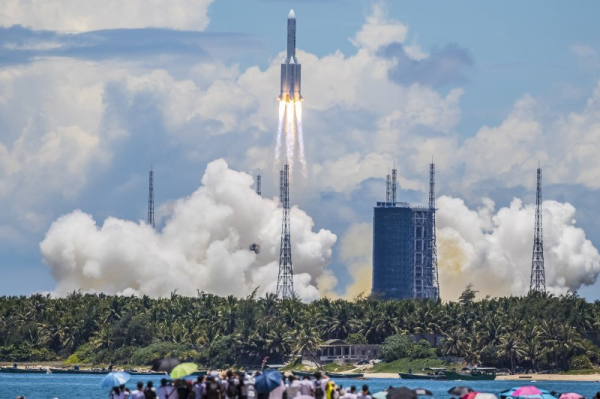
On Saturday, SpaceX launched Starshield satellites for the National Reconnaissance Office from California, followed 12 hours later by 21 Starlink satellites from Florida.
The Falcon 9 lifted off at 5:25 a.m. Pacific time from Vandenberg Space Force Base's Pad 4E. The number of spy satellites was not disclosed.
At 8:53 p.m. ET, another Falcon 9 lifted off from Kennedy Space Center's Pad 39A.
The launch was NRO's ninth mission in support of its Advanced Satellite Architecture constellation using a SpaceX Falcon 9 rocket. SpaceX has already launched more than 150 satellites for NRO and plans to continue launching through 2029, including a dozen this year.
According to the NRO press release, this is “the largest and most powerful government constellation in orbit in our nation's history.”
The classified mission was called NROL-192. It was the 24th flight of the rocket's first stage, which included 14 Starlink missions and three for the NRO. The first stage landed minutes later on the unmanned vessel Of Course I Still Love You in the Pacific Ocean near Long Beach.
Further launch dates have not been announced. In addition to SpaceX, NRO satellites could also be sent into space aboard United Launch Alliance's Vulcan rocket and Blue Origin's New Glenn rocket. ULA is certified to fly national security missions, while Blue Origin is awaiting government certification.
Eleven months ago, NRO began deploying “the world's most capable, resilient, and technologically advanced satellite constellation,” according to NRO Director Chris Scolese.
“This improved constellation is already reducing return visit times and increasing the robustness of observations; enabling improved coordination; and speeding up data processing, merging, and transmission,” Scolese said this week. “All of this is happening with greater reliability and safety.”
“Most importantly, we make it more difficult for our adversaries to conceal themselves while reducing the time to information for our customers from minutes to seconds, thereby enhancing national security and increasing the likelihood of delivering lethal strikes when needed,” he added.
The Starshield satellites are the government's version of SpaceX's Starlink satellites.
NRO was founded in 1962 to serve U.S. intelligence, military, civilian, and allied partners. The agency partners with U.S. Space Force Launch Delta 30 to launch its satellites.
SpaceX last launched 27 Starlink satellites from Pad 4E in Vandenberg on Monday.
Starlink
SpaceX launched a Starlink satellite late Saturday, including 13 satellites with direct-to-cellular capabilities, after two launches were canceled.
Shortly after launch, the first stage landed on the unmanned vessel A Shortfall of Gravitas, located in the Atlantic Ocean.
It was the 10th flight of the rocket's first stage, including four Starlink missions.
SpaceX did not specify the reasons for the delays of launches on Thursday evening and Saturday morning.
There were concerns about weather conditions in the area.
Another SpaceX launch is scheduled no earlier than 9:59 p.m. Sunday from Cape Canaveral's Launch Complex 40.
Sourse: www.upi.com





